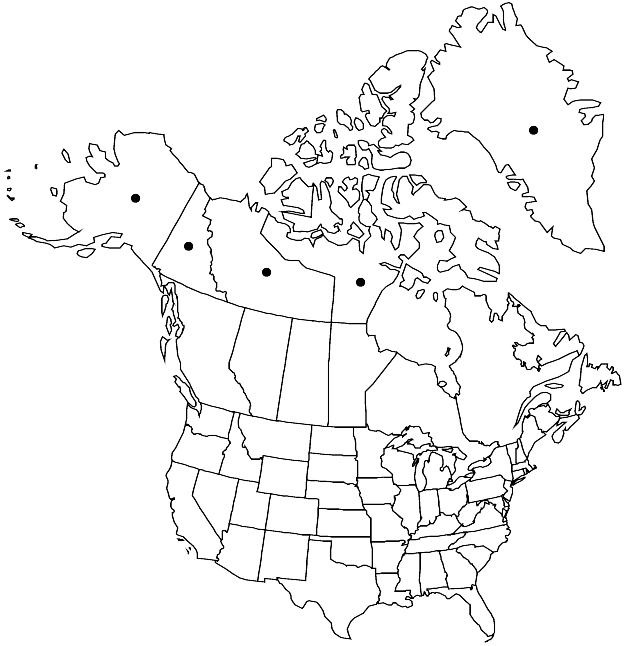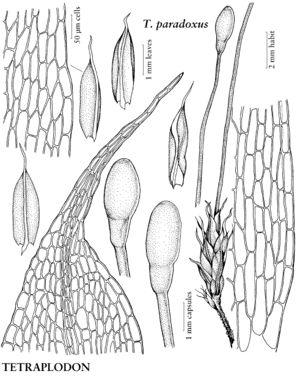Tetraplodon paradoxus
Nyt Mag. Naturvidensk. 38: 332. 1901.
Plants 2–4 cm, light green or yellow-green. Leaves ovate, concave, 2–5 mm; margins entire or nearly so; apex acuminate; costa ending in subula; distal laminal cells hexagonal, 30 µm. Sexual condition autoicous. Seta clear pale-yellow to stramineous, 2–3.5 cm. Capsule cleistocarpous, clear pale-yellow to stramineous, spindle or club-shaped; hypophysis conspicuously narrower than urn; stomata confined to distal hypophysis; operculum not developed. Calyptra cucullate or conic-mitrate. Spores 9 µm, smooth.
Phenology: Capsules mature summer.
Habitat: Caribou or muskox dung
Elevation: moderate to high elevations
Distribution

Greenland, N.W.T., Nunavut, Yukon, Alaska, n Europe (Arctic Russia)
Discussion
Tetraplodon paradoxus is much confused in the literature with T. pallidus (W. C. Steere 1977), although the two are easily distinguished. Tetraplodon paradoxus is cleistocarpous, the setae are longer (to twice as long), leaves smaller and more narrow, and capsules are darker and spindle- or club-shaped, with the hypophysis noticeably narrower than the urn and having fewer stomata. Steere suggested that spore dispersal to fresh dung might occur when the sporophytes are ingested by caribou or muskoxen and the spores subsequently dropped in dung at some other location.
Selected References
None.
